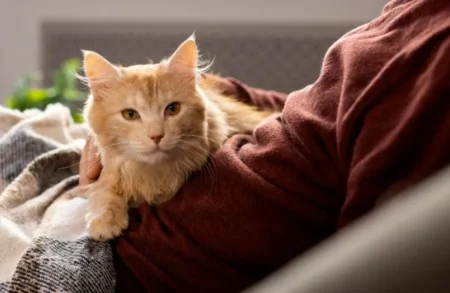 Having a cat changes how a home feels.
Having a cat changes how a home feels.
It’s softer, warmer, calmer — and a little unpredictable. Cats bring peace and chaos in equal measure. One moment they’re asleep like angels, the next they’re sprinting across the furniture at 3 a.m.
But sharing space with a cat also means changing how you think about your home. Some things that seem harmless to you can be dangerous, stressful, or even toxic for them. If you love your pet, a few simple changes can make your home safer — and your cat happier.
Plants That Look Nice but Aren’t Nice at All
Houseplants and cats often don’t mix. Many cats love chewing on leaves, either out of curiosity or boredom, but some plants can make them seriously sick.
Lilies are the worst offenders — even a small nibble or pollen dust can cause kidney failure. The same goes for philodendrons, dieffenbachia, aloe vera, and tulips.
If your cat treats plants like a salad bar, stick with safe ones like spider plants, cat grass, or basil. They’re harmless, and some even help with digestion.
A green home is great — but a living cat is better.
Scented Candles and Essential Oils
Everyone loves a home that smells clean and cozy. But many air fresheners, candles, and essential oils release compounds that can irritate a cat’s lungs.
Oils like tea tree, eucalyptus, and citrus might smell refreshing to you, but for cats, they’re toxic even in small doses. Their livers can’t process these substances the way ours do.
If you want your space to smell nice, use pet-safe candles or just open the windows more often. Fresh air beats artificial fragrance every time.
Small Objects, Big Problems
Cats are curious by nature — and that curiosity has consequences. Hair ties, rubber bands, string, tinsel, even tiny toys — they all look like playthings to a cat. But if swallowed, they can cause dangerous blockages that often require surgery.
Keep small items in drawers or closed containers. And when it’s holiday season, skip shiny ribbons and fragile ornaments — they’re cat magnets.
You don’t need to make your home boring — just make it safe.
Human Food That Doesn’t Belong in a Cat’s Bowl
It’s tempting to share food when those big eyes stare at you from under the table. But what’s fine for humans can be toxic to cats.
Chocolate, onions, garlic, grapes, and even caffeine can cause severe reactions. Dairy is another surprise — most cats are lactose intolerant, despite every cartoon suggesting otherwise.
The best rule? Cat food for cats. Human food for humans. That way, no one ends up at the vet.
Stress Triggers You Don’t Notice
Cats are creatures of routine. They love predictability, quiet corners, and soft places to nap.
Loud music, constant guests, or rearranging furniture too often can make them anxious.
If your cat hides or avoids certain rooms, it might not be “just their mood” — it’s stress. Giving them one calm, safe space where they’re left alone can make all the difference.
A peaceful cat is a healthy cat.
The Bottom Line
Living with a cat means living with awareness.
They don’t ask for much — warmth, food, attention — but they depend entirely on you to make the environment safe.
The best homes for cats aren’t the fanciest ones. They’re the ones where people think before lighting a candle, buying a plant, or leaving out that shiny piece of ribbon.
Because love for animals isn’t just about cuddles — it’s about care.
And when your home feels calm, safe, and cat-proofed, you’ll notice something else too: you’re calmer, safer, and happier yourself.
Picture Credit: Freepik
